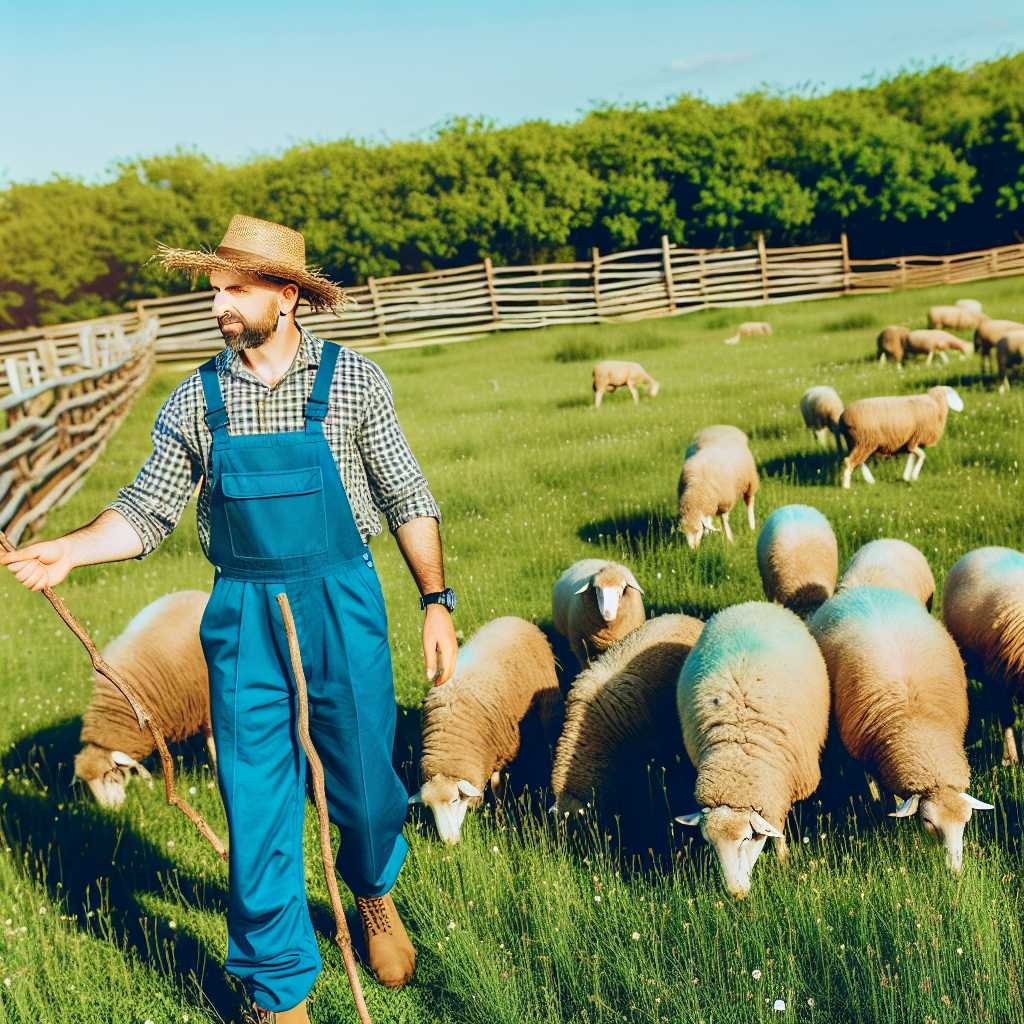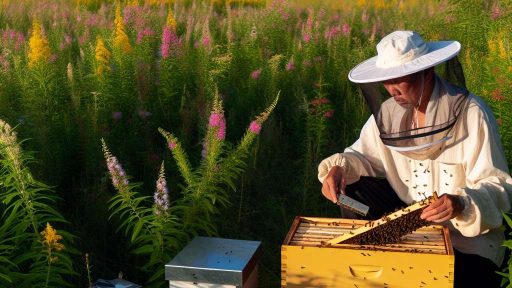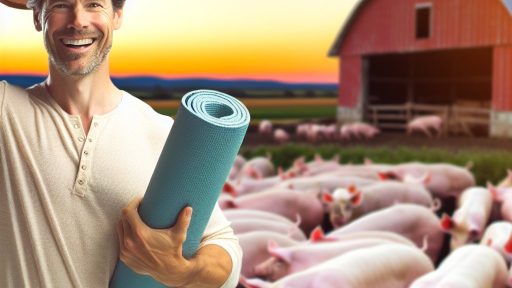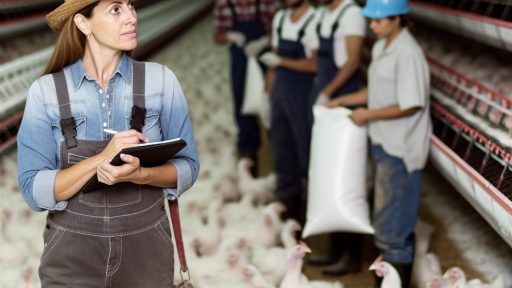Introduction to Grazing Systems and Their Importance
Grazing systems play a crucial role in modern agriculture.
They influence both forage growth and soil fertility significantly.
Understanding these systems helps farmers make informed decisions.
Defining Grazing Systems
A grazing system is a planned approach to managing livestock grazing.
It focuses on the timing and duration of grazing in specific areas.
Different systems can enhance or degrade forage and soil health.
Types of Grazing Systems
- Continuous grazing allows livestock unrestricted access to pastures.
- Rotational grazing involves moving livestock between pastures regularly.
- Strip grazing uses smaller, subdivided areas for focused grazing.
- Mob grazing utilizes high-density stocking for short periods.
The Importance of Forage Growth
Healthy forage growth is vital for livestock nutrition.
It contributes to livestock productivity and overall health.
Moreover, diverse forage species enhance ecosystem resilience.
Enhancing Soil Fertility
Grazing systems can improve soil fertility through natural processes.
Well-managed grazing increases organic matter and nutrient cycling.
Additionally, animal manure serves as a natural fertilizer.
Benefits of Effective Grazing Management
Implementing effective grazing systems leads to multiple advantages.
- Improved forage quality enhances animal performance.
- Higher soil fertility supports sustainable agricultural practices.
- Positive impacts on biodiversity promote ecosystem health.
- Increased carbon sequestration mitigates climate change effects.
Types of Grazing Systems
Continuous Grazing
Continuous grazing allows livestock to access a single pasture indefinitely.
This approach often leads to overgrazing of preferred forage species.
Transform Your Agribusiness
Unlock your farm's potential with expert advice tailored to your needs. Get actionable steps that drive real results.
Get StartedAs a result, the pasture may exhibit uneven growth patterns.
Soil compaction becomes a significant issue over time.
Moreover, this system can adversely affect soil fertility.
Continuous grazing often reduces biodiversity in pasture ecosystems.
Managed Intensive Grazing
Managed intensive grazing organizes livestock into smaller groups.
This method rotates these groups among several pastures.
Consequently, pasture recovery improves after livestock graze.
Soil health benefits from reduced compaction and better nutrient cycling.
Managed grazing often supports higher biodiversity levels.
Furthermore, it enhances forage growth and quality significantly.
Comparative Benefits
Both systems offer unique advantages and challenges.
Continuous grazing is simpler to implement and manage.
However, managed intensive grazing provides more long-term benefits.
Each system requires careful consideration of regional conditions.
Farmers should assess their specific goals and resources.
Ultimately, choosing the right system promotes healthier pastures and soils.
Impact of Grazing on Forage Growth
Benefits of Grazing
Grazing can enhance forage growth significantly.
It stimulates plant regrowth through natural pruning.
Additionally, grazing can improve nutrient cycling in the soil.
It promotes the development of diverse plant species.
Healthy pastures provide better forage quality for livestock.
Moreover, effective grazing systems contribute to soil structure improvement.
Challenges of Grazing
Overgrazing poses a significant risk to forage health.
This practice leads to soil degradation and erosion.
Showcase Your Farming Business
Publish your professional farming services profile on our blog for a one-time fee of $200 and reach a dedicated audience of farmers and agribusiness owners.
Publish Your ProfileConsequently, it reduces the land’s overall productivity.
Furthermore, poorly managed grazing can promote weed proliferation.
Weeds often outcompete desired forage species.
Effective planning is critical to mitigate these challenges.
Strategies for Improved Grazing Management
Implementing rotational grazing can optimize forage health.
This method allows for periods of rest for pasture regrowth.
Monitoring pasture conditions helps in adjusting grazing patterns.
Additionally, using cover crops can enhance soil fertility.
Incorporating diverse species into the grazing system supports resilience.
Explore Further: Pasture Rotation Strategies for Sustainable Livestock Farming
Role of Soil Fertility in Sustainable Grazing Practices
Understanding Soil Fertility
Soyl fertility determines the capacity of soil to support plant growth.
Nutrients within the soil play a critical role in supporting sustainable grazing systems.
Rich soil encourages healthy forage growth, which benefits grazing livestock.
Key Nutrients for Forage Growth
Nitrogen is essential for leafy plant growth and overall vigor.
Phosphorus promotes root development, enhancing plant resilience and productivity.
Potassium helps plants withstand drought and improves their disease resistance.
Micronutrients, such as zinc and iron, are also crucial for optimal forage health.
Impacts of Soil Fertility on Grazing Efficiency
Fertile soil increases forage yield, providing ample grazing for livestock.
Improved forage quality leads to better animal health and productivity.
Additionally, higher soil fertility reduces the need for chemical fertilizers.
Soil Management Techniques
Regular soil testing helps determine nutrient levels and needs.
Crop rotation enhances soil structure and nutrient availability.
Cover cropping prevents erosion and improves soil quality over time.
Applying organic amendments, such as compost and manure, enriches soil fertility.
Sustainable Practices for Enhancing Soil Fertility
Integrating livestock into cropping systems can enhance soil health.
Grazing management, like rotational grazing, prevents overgrazing and soil compaction.
Minimal tillage preserves soil structure and microbial activity.
Long-term Benefits of Healthy Soil
Healthy soils contribute to sustainable agricultural ecosystems.
They enhance biodiversity both above and below ground.
Ultimately, they improve resilience against climate change impacts.
This leads to more sustainable grazing practices and food security.
Learn More: Implementing Climate-Resilient Solutions For Organic Livestock Management
Strategies for Integrating Livestock and Forage Production
Understanding Grazing Systems
Grazing systems maximize forage growth effectively.
They promote balanced nutrient cycling in soil.
Moreover, these systems enhance livestock health.
Types of Grazing Systems
Rotational grazing allows for optimal forage regrowth.
This approach improves soil structure and health.
In contrast, continuous grazing can lead to overgrazing.
So, understanding these differences is essential.
Benefits of Integrating Livestock
Integrating livestock with forage production yields numerous benefits.
Showcase Your Farming Business
Publish your professional farming services profile on our blog for a one-time fee of $200 and reach a dedicated audience of farmers and agribusiness owners.
Publish Your ProfileThis technique enhances nutrient availability in the soil.
It also helps control weed populations naturally.
Furthermore, livestock manure adds organic matter to the fields.
Implementing Grazing Strategies
Establish clear objectives for your grazing system.
Identify specific goals for forage yield and soil health.
Next, assess your land’s current condition and needs.
Monitor the growth of forage regularly for optimal management.
Utilizing Technology in Grazing
Leverage technology to enhance grazing management.
Tools such as GPS and drones provide valuable insights.
They can help in planning grazing patterns and rotations.
Additionally, data collection ensures effective decision-making.
Educating Livestock Managers
Training is crucial for successful grazing integration.
Workshops can provide essential knowledge and skills.
Furthermore, peer learning can enhance best practices.
Encourage sharing experiences within the agricultural community.
Gain More Insights: Remote Sensing in Precision Livestock Farming for Improved Feed Management

Case Studies: Successful Grazing Systems Around the World
Innovative Practices in New Zealand
In New Zealand, farmers utilize rotational grazing systems effectively.
This method enhances pasture growth by allowing time for recovery.
Farmers frequently monitor grass growth and animal health.
As a result, they maximize forage production and soil vitality.
Agroecological Approaches in Brazil
Brazilian farmers incorporate agroecological principles into grazing practices.
They combine livestock with various crops to promote biodiversity.
This integration enhances nutrient cycling and reduces pests.
Consequently, farmers see improved forage quality and quantity.
Holistic Management in the United States
In the United States, holistic management transforms how cattle are grazed.
This approach mimics natural grazing patterns to improve soil health.
It fosters a diverse ecosystem that benefits grass and livestock alike.
Furthermore, it allows farmers to manage land sustainably while increasing profits.
Community-Based Grazing in Africa
African pastoralists practice community-based grazing successfully.
They manage land collectively, ensuring equitable resource distribution.
This strategy reinforces traditional knowledge and strengthens community ties.
Moreover, it protects grazing land and promotes biodiversity.
Lessons from Australia
Australian ranchers adopt cell grazing techniques for efficiency.
They group livestock into smaller herds and rotate them frequently.
This practice minimizes overgrazing and helps pastures recover faster.
Ultimately, it enhances soil fertility and improves forage growth.
Learn More: Sustainable Livestock Practices for Regenerative Agriculture
Best Practices for Monitoring and Managing Soil Health in Grazing Systems
Understanding Soil Health
Soi health is crucial for productive grazing systems.
Healthy soil promotes robust forage growth.
Therefore, it contributes to overall ecosystem resilience.
Showcase Your Farming Business
Publish your professional farming services profile on our blog for a one-time fee of $200 and reach a dedicated audience of farmers and agribusiness owners.
Publish Your ProfileRegular Soil Testing
Conduct regular soil tests to assess nutrient levels.
Testing helps identify deficiencies and toxicities.
Use this data to create a tailored management plan.
Monitoring Soil Moisture
Implement moisture monitoring techniques to determine soil needs.
Consider using soil moisture sensors for accurate readings.
These insights help manage irrigation and grazing timing.
Implementing Crop Rotation
Rotate grazing areas to prevent soil nutrient depletion.
This practice enhances biodiversity in the soil.
It also disrupts pest and disease cycles.
Utilizing Cover Crops
Plant cover crops during off-seasons to protect the soil.
Cover crops reduce erosion and suppress weeds effectively.
Moreover, they enhance soil organic matter content.
Practicing No-Till Farming
No-till practices protect soil structure and biology.
This approach minimizes soil erosion and compaction.
Ultimately, it fosters a healthier soil ecosystem.
Integrating Livestock and Crop Management
Incorporate livestock into the nutrient cycling process.
Manure provides natural fertilization and enhances soil health.
Efficient integration leads to a balanced ecosystem.
Continuous Education and Training
Stay informed about soil health best practices.
Attend workshops and trainings regularly to enhance knowledge.
Networking with agricultural experts can offer valuable insights.
Utilizing Technology for Soil Management
Adopt technological tools for soil management.
Drones and satellite imagery can monitor soil conditions effectively.
These technologies provide real-time data for informed decision-making.
Future Trends in Grazing Systems: Innovations and Technological Advancements
Introduction to Future Trends
The future of grazing systems continues to evolve rapidly.
Innovations and technology play crucial roles in this transformation.
Farmers increasingly seek methods that enhance productivity and sustainability.
Precision Livestock Farming
Precision livestock farming revolutionizes how producers manage their livestock.
This technology utilizes sensors and data analytics for better monitoring.
As a result, farmers make informed decisions to optimize grazing practices.
Consequently, animal health and environmental impacts improve significantly.
Integrating Smart Technology
Smart technology integration enhances traditional grazing methods.
Remote monitoring devices track animal health and pasture conditions.
Farmers can then allocate resources more effectively.
This technology minimizes waste and maximizes forage use.
Advanced Soil Management
Soil health is vital for successful grazing systems.
Technological advancements enable precise soil health assessments.
Farmers can monitor nutrient levels, pH, and microbial activity rapidly.
These insights guide management practices to improve soil fertility.
Regenerative Grazing Practices
Regenerative grazing practices are gaining popularity among farmers.
Showcase Your Farming Business
Publish your professional farming services profile on our blog for a one-time fee of $200 and reach a dedicated audience of farmers and agribusiness owners.
Publish Your ProfileThis method promotes natural processes to restore ecosystems.
Farmers rotate livestock to prevent overgrazing and enhance biodiversity.
Such practices boost soil organic matter and carbon sequestration.
Utilizing Drones in Grazing Management
Drones are becoming indispensable in modern grazing management.
These devices provide aerial views for better land assessment.
Farmers can quickly identify areas requiring attention.
Additionally, they facilitate more efficient planning and resource allocation.
Developing Adaptive Grazing Systems
Adaptive grazing systems respond to changing environmental conditions.
Farmers continuously monitor forage quality and quantity.
This responsiveness ensures that livestock receive adequate nutrition.
Ultimately, it contributes to sustainable land use and animal welfare.
Collaboration and Knowledge Sharing
Collaboration among farmers enhances grazing system innovations.
Knowledge sharing enables the adoption of best practices.
Professional networks support continuous learning and improvement.
This collective approach drives advancements in grazing management.
Additional Resources
Managing Grazing to Restore Soil Health, Ecosystem … – Frontiers




